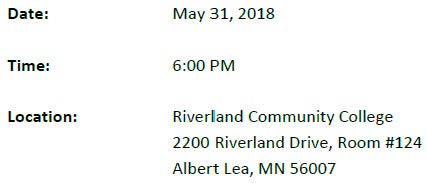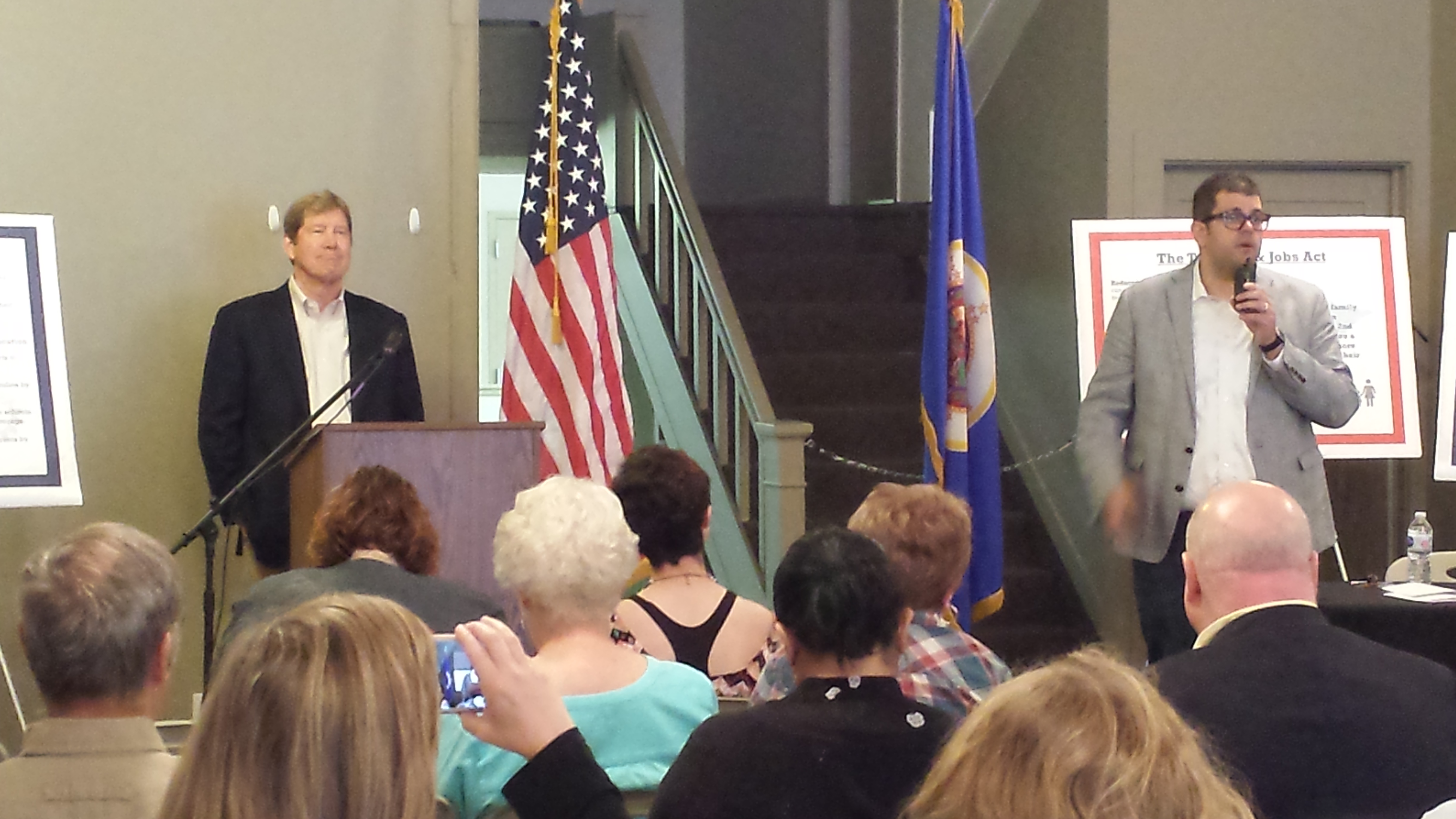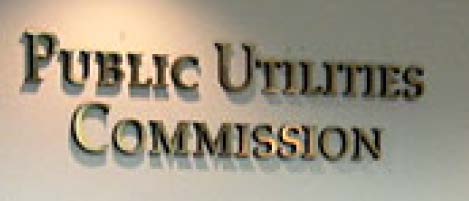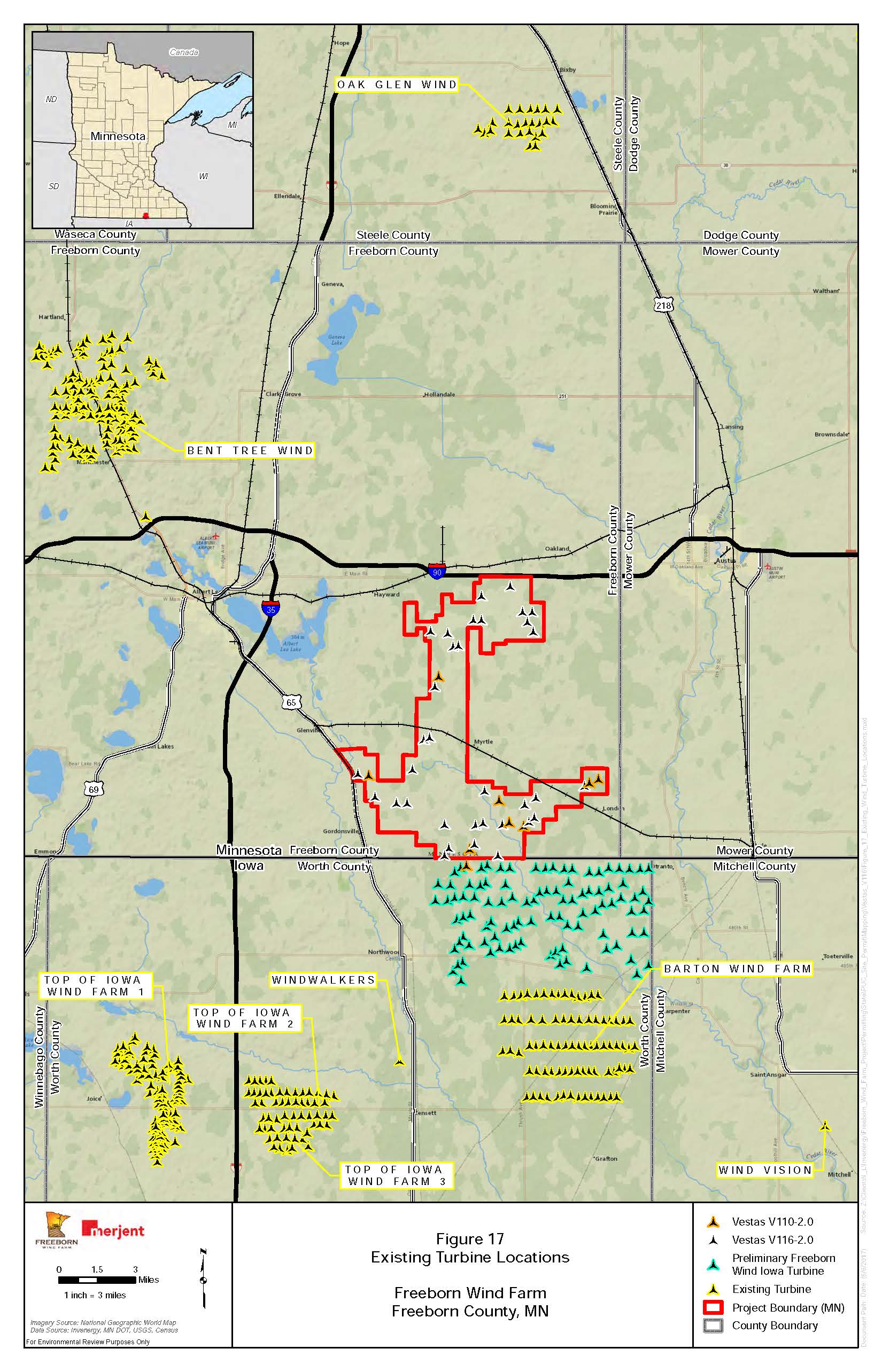Freeborn Wind transmission hearing TONIGHT!
May 31st, 2018

Tonight is the public hearing, using the “Alternative Review Process,” for the transmission for the Freeborn Wind Project, the very same project that has been recommended be denied by the Administrative Law Judge:
WE WON!!! ALJ Recommend Freeborn Permit be DENIED, or…
Be there or be square:

What’s at issue? Most important is “need” and lack thereof. Under Minesota Rules, need may not be addressed in the environmental review:
BUT, where there is no Certificate of Need, issues of size, type and timing MAY be addressed — the prohibition of addressing need only applies where a Certificate of Need has been issued:
7850.4200 FACTORS EXCLUDED.
When the Public Utilities Commission has issued a Certificate of Need for a large electric power generating plant or a high voltage transmission line or placed a high voltage transmission line on the certified HVTL list maintained by the commission, questions of need, including size, type, and timing, questions of alternative system configurations, and questions of voltage shall not be factors considered by the commission in deciding whether to issue a permit for a proposed facility.
There is no Certificate of Need required or issued for this project, and so “questions of need, including size, type, and timing, questions of alternative system configurations, and questions of voltage” are fair game.
In this case, it’s particularly relevant where the ALJ has recommended the project site permit be denied! No project, no transmission needed.
Off to Albert Lea!
Respectful wind siting NOW!
May 24th, 2018

The Red Wing Republican bEagle ran my commentary on wind siting, all of it! Short version? Respectful wind siting now! The community must consent!
Viewpoint: Respectful siting process for wind turbines long overdue
By Carol A. Overland, Red Wing
It’s taken a decade, but the Minnesota policy battleship is turning regarding siting of wind projects. State agencies, in their rush to site wind, have dropped the ball — they have failed in their charge to regulate and protect the public and the public interest. We need a respectful siting process, and that is 20 years overdue. If Minnesota doesn’t correct our wind siting process, the legitimate pushback will make siting a wind project difficult at best.
Recently an administrative law judge issued a recommendation that the Freeborn Wind Project be denied because it had not demonstrated it could meet the state’s noise regulation, or in the alternative, give the developers some time to demonstrate how it will comply with noise standards at all times throughout the project footprint.
The Public Utilities Commission will make a permitting decision, typically a month or more out. It’s not final, but this recommendation is a crucial step.
The Freeborn Wind case involves many “firsts.” It is the first project in Minnesota to be sited using the siting criteria of the Power Plant Siting Act (criteria in Minn. Rules 7850). It is the first project in Minnesota where the siting permit was subject to a contested case proceeding, in essence a trial, where the applicant had to prove up its application before an administrative law judge. It is the first project where an administrative law judge has recommended the permit be denied.
Lax rules
Minnesota wind siting has been lax and much of that falls directly on the Department of Commerce. The Environmental Quality Board no longer has siting authority. It’s been that way since 2005, when the Energy Omnibus bill shifted it to Commerce, doing siting “analysis” for PUC — in addition not to using Power Plant Siting Act criteria, and until now, no contested case.
There is no environmental review, no environmental assessment worksheet, no environmental impact statement, required for wind projects. Wind projects, until now, were separated out from the Power Plant Siting Act and permits issued citing the wind statutes and rules Minnesota Statute 216F and Minnesota Rules 7854, which have NO siting criteria at all? All wind siting permits cite only Statue 216F and Rule 7854 as permitting authority! That compartmentalization is the doing of the Department of Commerce.
There are small wind “standards,” which were ordered in 2008, but that was not a rulemaking. It was a process that was a too fast response to a legislative mandate, and in essence, the PUC took small wind standards and stamped them as “Large Wind Energy Conversion System” standards.
Nothing has been done since, despite pre- and post-construction complaints, suggestions, interventions and rulemaking petitions. State agencies, in their rush to site wind, have failed in their charge to regulate and protect the public and the public interest.
Issues are real
Wind projects are by definition the nuisance moving to the landowners. All are sited where there’s an established community, and the wind projects lease land in patchwork sites for their projects. Communities are steamrolled. The way projects are sited, it’s inevitable that homes are surrounded, and turbines are close to homes.
Noise issues are real. Noise modeling isn’t necessarily predictive, and siting often doesn’t allow for margin of error. Shadow flicker is real, but landowners are provided with blinds to live in the dark or are told to take a trip to Florida during times of heavy shadow flicker. Eagle nests are not accounted for, or in one case, blown away by helicopter, and in another, removed after getting a permit.
It’s time to develop thoughtful and respectful siting; It’s long overdue. We can establish standards and rules so that wind projects are projects people can live with. We can require modeling that provides for margin of error. We can take into account the feelings of non-participants who already live in the area and will be affected by a project moving in. The community must consent.
Looking forward, if Minnesota doesn’t alter siting regulations and practices, it’s going to be very difficult to site wind projects.
There’s also a problem looking backward, for there are people now living in the midst of improperly sited wind projects. Not only does Minnesota need to address siting issues, but Minnesota needs to develop policies for those living near and affected by wind projects, as has been done for other types of utility projects. There are at least two wind project permits now before the Public Utilities Commission regarding noise and
Minnesota’s noise regulation. Wind turbines are massive structures with 55-foot diameter concrete foundations — it’s not like we can just pick them up and move them.
Permits say that if there are violations, the violations must be corrected, or the permit can be suspended and/or revoked. In short, solutions to problems in existing wind developments are not easy, and few options are practical.
What to do? A start is to revamp Minnesota’s permit complaint process, which is occurring now in one docket. The revised complaint process, after public comment and a hearing, should be applied to all permits.
Another step is to enact an “opt out,” similar to the “Buy the Farm” option for transmission (Minnesota Statute 216E.12, Subd. 4, where affected landowners can make the utility buy them out rather than live under a transmission line.
Other ideas include a promulgation and revamp of PUC and MPCA rules, which is a multi-year process.
Policy takes a long time to change. Will Minnesota’s agencies, utilities, wind developers, landowners, and legislators work on the changes or will it be a continued fight? Do utilities want to site wind projects in Minnesota?
With the developments over the last year, I’m encouraged that Minnesota will work toward respectful siting. Let’s make it happen.
Carol A. Overland is a Red wing attorney who represents Association of Freeborn County Landowners.
p.s. Minnesota’s existing Wind Standards and Exhibit A.
Rep. Jason Lewis is clueless about so much
May 21st, 2018

“Our” CD2 Rep. Jason Lewis does not represent me (nevermind that he doesn’t even live in this Congressional District!!). He demonstrated at his “Town Hall” meeting that he is clueless about so much. He hasn’t held Town Hall meetings and is obviously afraid of his “constituents.”
Don’t be distracted by procedure, his ticket lottery, or the attempts to shut up and shut down constituents.
What’s important about this is taking note of the issues he’s most vulnerable on as displayed at the “Town Hall:
- Harsh positions on immigration position without recognition of role and work of immigrants in CD2;
- Food stamp work requirements without recognition that Minnesota already has work requirement laws and that people working at minimum wage qualify for food stamps and child care must be available for people to work (and cost of child care is often equal to pay for low wage jobs).
- Spouting the “anti-college” mindset, when it’s not binary. We need to have all educational options available and accessible to anyone who wants to learn, whether a trade, a B.A./B.S, and/or grad school — I’ve been to all of the above, and could never have gotten a B.A. without 916 VoTech and truckdriver training! Anyone who can make the grade should be welcomed. Education is the key to economic stability — well, coupled with home ownership so people can weather economic crisis and invest in community.
- He talks around climate change and rather than address cutting emissions, he promotes nuclear and Yucca Mountain. Yucca Mountain was proven unworkable, what, a decade ago?
- Statements about “what’s causing the shootings?” and going on about mental illness and mentally ill should not own guns. Earth to Mars, that’s not the issue. It’s about mental dysfunctionality and white supremacist ideation at the root of nearly all mass shootings.
Jason Lewis, it’s time for you to go.

It’s been a busy week. First the release of the ALJ Recommendation for the Freeborn Wind Proect:
OAH+80-2500-34633+Findings of Fact, Conclusions of Law, and Recommendation
In the STrib today, on both Freeborn Wind and the Bent Tree project!:
Administrative Law Judge says PUC should reject Freeborn County wind project
A couple of choice snippets from STrib article:
and:
Methinks they’re getting the message that wind projects can no longer steamroll communities. It’s time for rulemaking, it’s time for revision of “standards” to something people can live with, it’s time to use proper, applicable, siting criteria, DOH!.
And today was yet another big day, because the Public Utilities Commission approved settlement agreements for two families who have been living under the Bent Tree wind project. This is the first time in Minnesota that landowners within a wind project have been bought out.
It’s real.
Here are the Staff Briefing Papers:
The room was packed, and I hope that the this “first” wasn’t lost on the audience. Wind has shifted direction. Are you paying attention?


WE WON!!! ALJ Recommend Freeborn Permit be DENIED, or…
May 14th, 2018

Bottom line:

This was the first ever contested case for a wind permit in the state of Minnesota, which has sited many, many wind projects. Finally they’re doing it right, under the Power Plant Siting Act. AND in this first ever contested case in Minnesota, the Administrative Law Judge has just recommended that the permit be denied, or Freeborn Wind show how it would comply. LIKE WOW! Is this exciting or what!
Here’s the ALJ’s full Recommendation to the Public Utilities Commission:
OAH+80-2500-34633+Final+Order
Noise is real, and Minnesota has been lax about siting. That will change!
Next stop, the Public Utilities Commission! Can’t wait!
YEAAAAAAAA!
